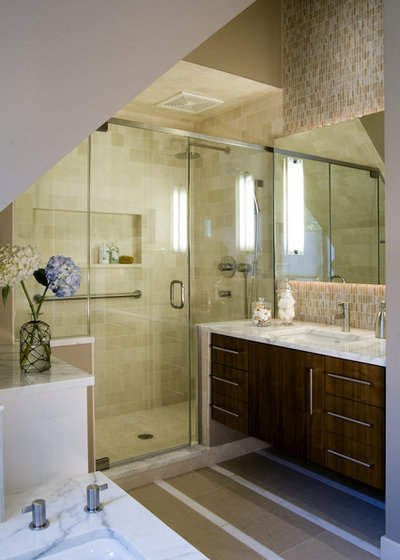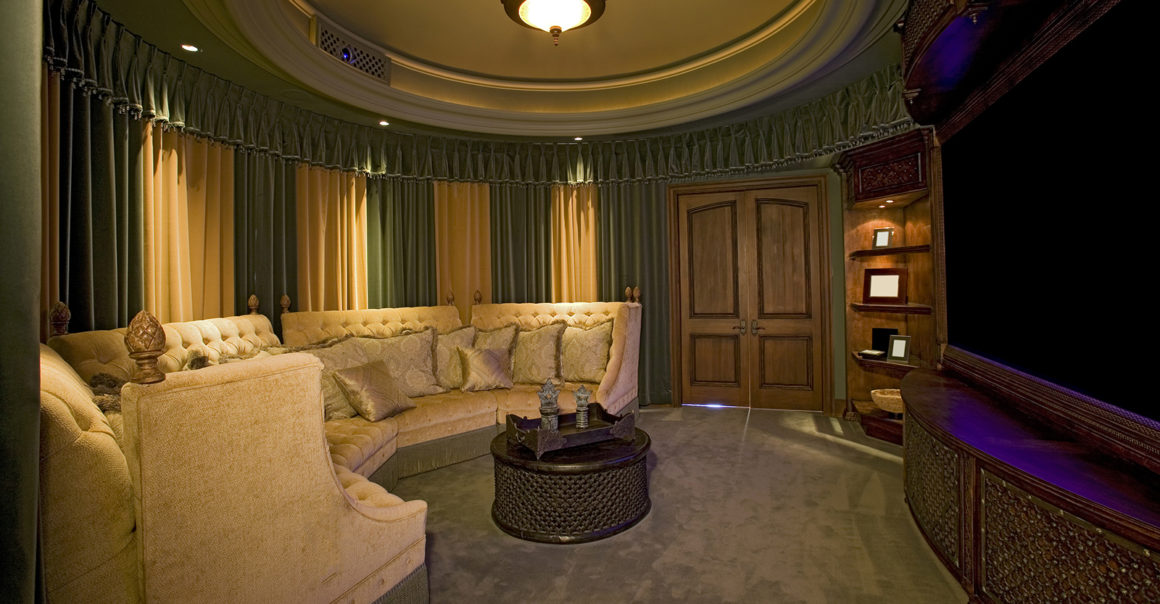
By Anne Higuera, Houzz
This is especially true if you select a new 80-gallon soaking tub and you have a 50-gallon tank. Consider a separate tankless or tank heater for your second story, or a larger tank with a recirculation pump that keeps hot water right at your taps.
Also consider how large your street-side water supply lines are. If you add enough fixtures, the plumbing code may require you to upgrade to a larger supply line. And if you still have galvanized piping, this is probably the time to take it all out. How to Get a Freestanding Tub
2. Get the right gas meter.More gas appliances usually means a larger meter. Most utility providers will require you to add up the BTU (British thermal unit) requirements of your appliances (furnace, water heater, range, washer-dryer, barbecue, fireplace) and size your meter accordingly. Or maybe you’re adding that barbecue and fireplace in a few years? Sizing the meter larger now and running pipe where you will need it can save you money in the future.
3. Deaden the sound.While your friends will not be able to admire all that pretty insulation in your walls, they will be relieved to not hear what’s going on in the powder room since you insulated all the walls with sound insulation. You can choose fromRockwool insulation, sound board or drywall specifically designed to deaden sound transmission through wall cavities. Using resilient channels in ceilings can also help stop sound transmission from one floor or room to another. You may also want sound insulation around your laundry room and media room and in shared bedroom walls.
4. Avoid the waterfall noise. Decorative waterfalls are soothing in a backyard, but not when you hear them running through your walls. Plastic waste pipe in walls —
insulated or not — can create the very audible sound of falling water. This is not an issue when the pipes run into an unfinished basement, but when you add a second story, those waste lines come down through one or more main floor walls. Upgrading to cast iron waste pipes will go a long way toward making them invisible to the ear.
5. Invest in quiet exhaust fans. They are required by code in many locations, generally where you have running water. But if you intend to regularly use your exhaust fans, invest in quiet ones. A loud fan can be audible and even shake the floor in which it is installed.
Consider carefully how you will use your fans and make the most frequently used ones as quiet and low vibration as possible. Consider timers for them too, or humidistats, which measure the humidity in the air and turn the fans off when they reach their set level. Motion-sensor fans are also an option. Remodeling Your Kitchen? Find the Right Range Hood and Vent
6. Plan ahead.Think you might like to add solar before the federal tax credit expires at the end of 2016? Plan for it now. Pondering an electric car? Install a circuit for a charging station just in case. Think you can live without air-conditioning but might want it when you can afford it? Plan for that too. You may even have a second phase planned. Make sure all the engineering and mechanical systems for that next phase are in place and ready to go. Photos are critical when you go this route. Take multiple photos with a measuring tape in the picture before covering these provisions for your future project.
7. Upgrade your electrical panel.Take a really good look at your electrical panel. If it’s 100 amperes and every slot is filled, chances are that you’re a prime candidate for a panel upgrade. Even if it’s 125 or 200 amperes, added rooms and an updated kitchen will often require a panel upgrade. Remember, too, that code governs where panels can be, and that means not in a closet. If you still have antiquated wiring, this may also be the ideal opportunity to run new wiring and ground all those outlets. Hire a Local Electrician to Upgrade Your Electrical Panel
8. Weight the pros and cons of new siding, windows and doors.A second-story or bump-out addition begs the question: Stick with the windows, doors and siding you have or choose something new? Your decision may be forced by structural requirements. If enough of your exterior walls need siding removed and plywood nailed on, it may make sense to replace everything. But if you have brick at the main level, you may want to use cement or wood siding at your addition. Window and door matching generally makes sense only if what’s existing is already in pretty good shape or is prohibitively expensive to replicate. The choice is unique to every home; consult with your contractor and architect on the best way to proceed.
9. Don’t be short sighted. We have had clients ask for baby gates installed permanently on their beautiful custom-built railings. We have had families with toddlers convinced they need adjacent bedrooms, not looking ahead to the teen years and the desire for separate bedrooms. You’re investing a lot of money and time on your remodel, so make sure it will last longer than the current phase your family is going through.
When planning for a lifetime home, think about grab bars, accessibility and universal design — if not for yourselves, then for older adults who may visit. An accessible home is also valuable for resale.




